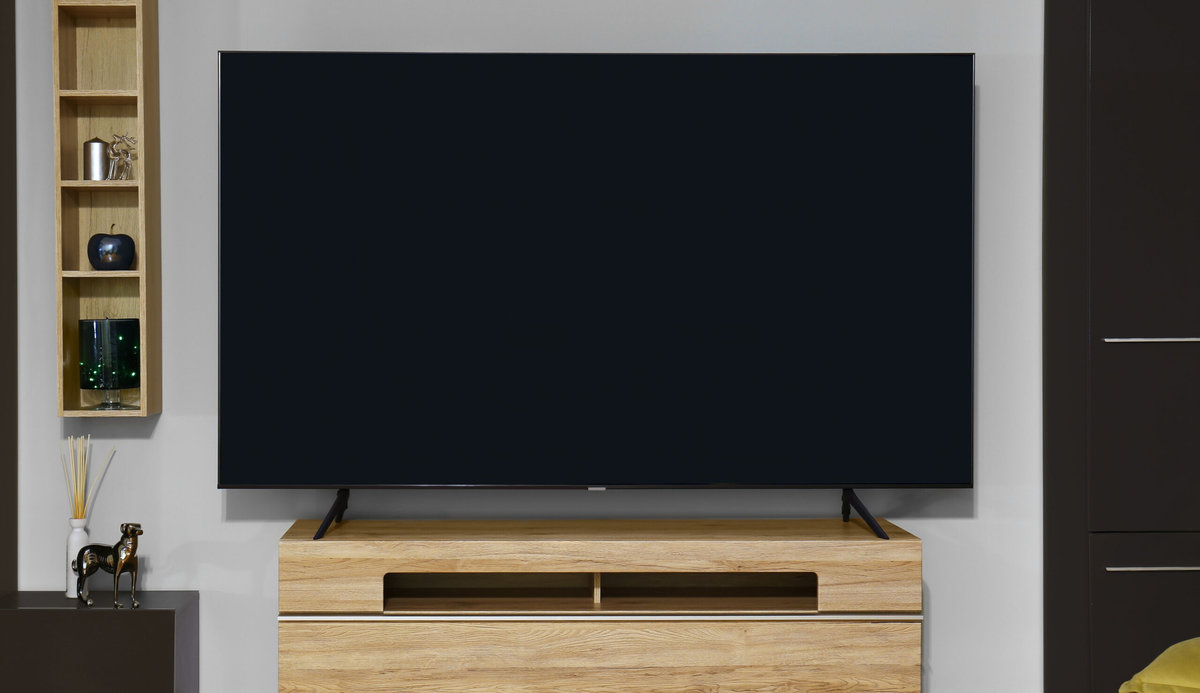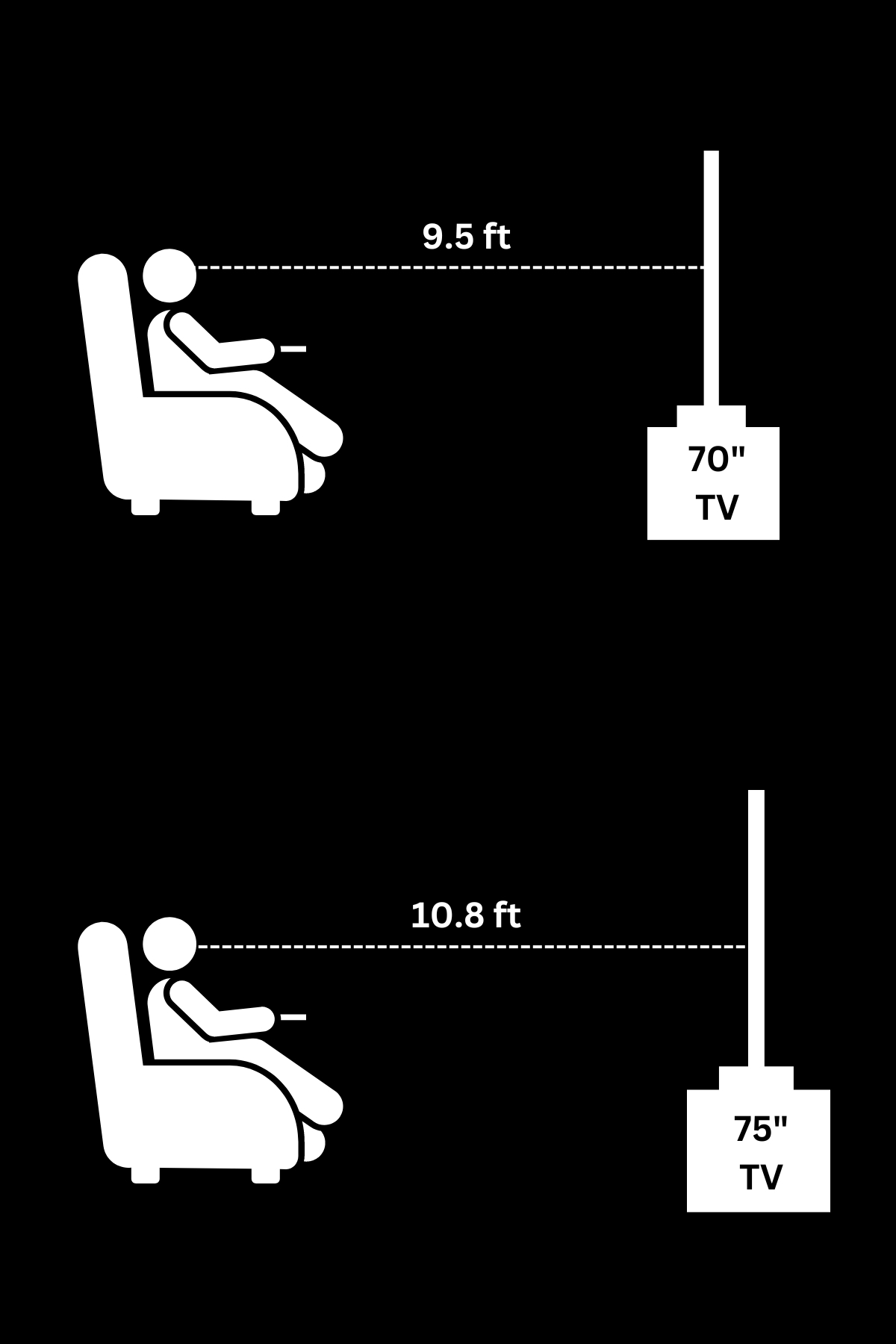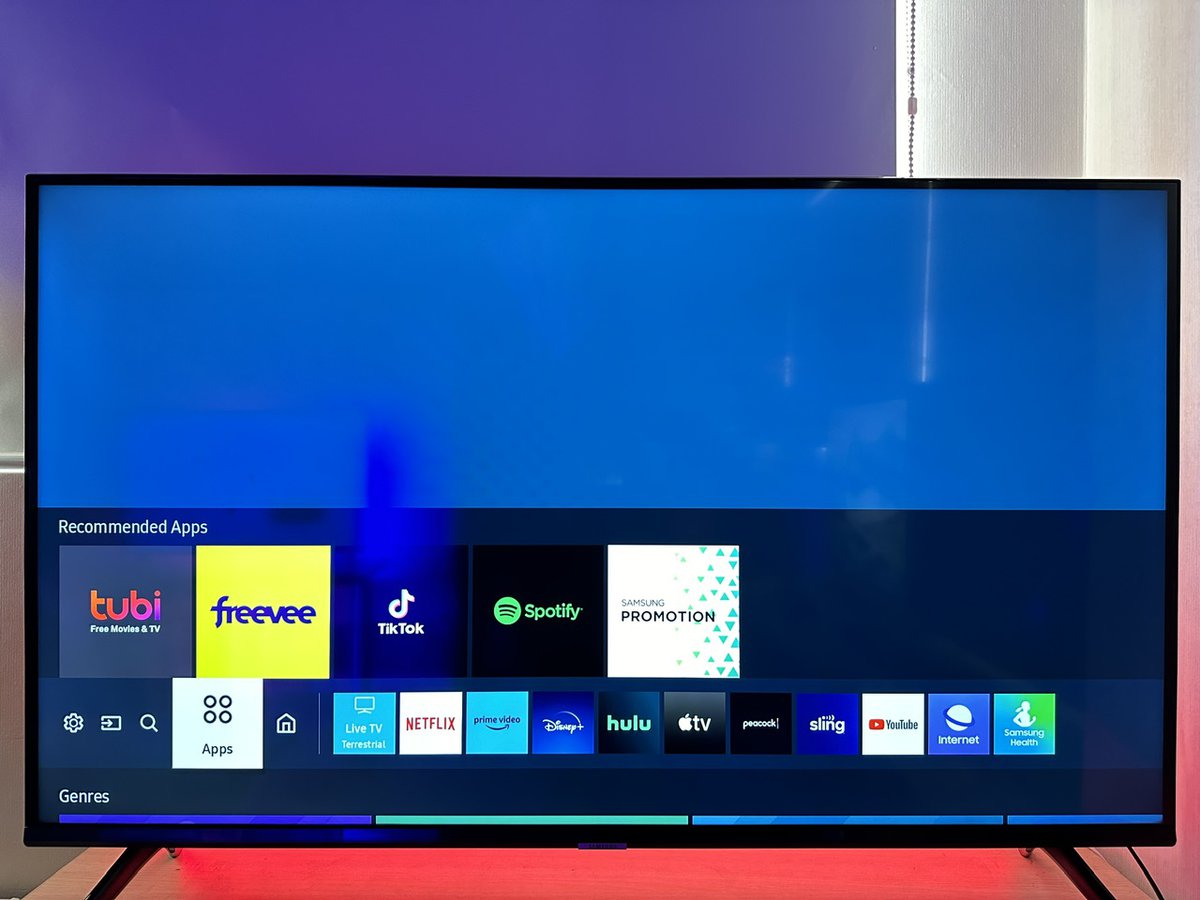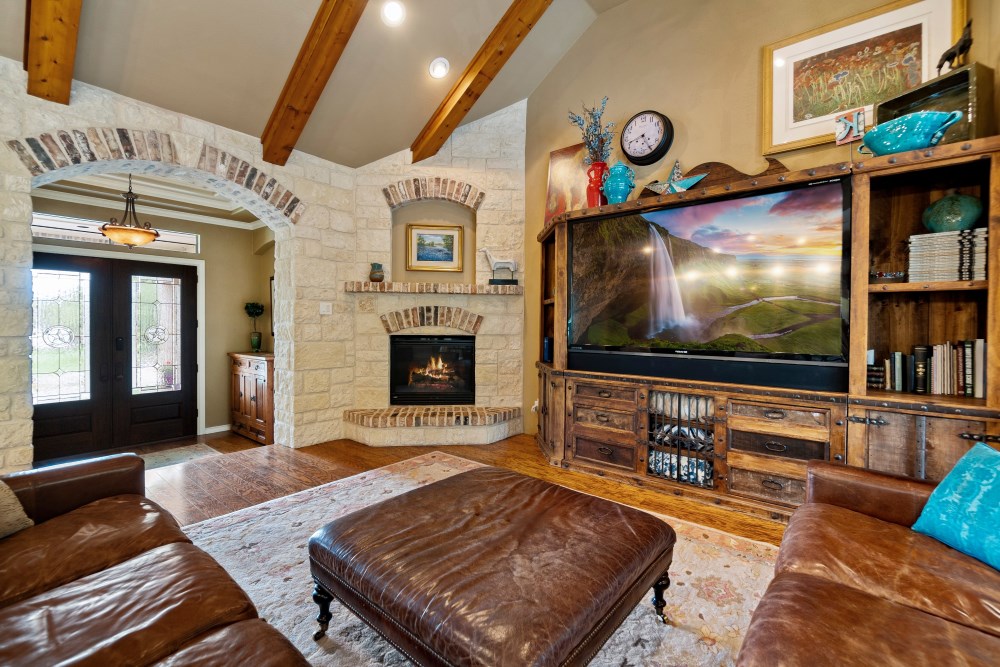70 vs. 75-inch TV: A Big Difference?

What To Know
- While 75-inch TVs are 15.06% larger, the substantial size of a 70-inch TV already provides an expansive viewing experience, so the difference is no longer noticeable.
- A 70-inch TV fits better in most living spaces, enhancing room decor without overwhelming it, making the size the preferred choice for a balanced living environment.
- Choosing a 70-inch over a 75-inch TV saves significant costs, offering better value as the increase in size doesn’t really make a big difference.
This article will compare the 70-inch and 75-inch TV sizes, highlighting the key differences and considerations, hence, offering insights to help you make an informed decision.
Keep reading to find out which TV size could be the perfect match for your home entertainment setup.
Quick Navigation
Quick Comparison Table
| Criteria | 70 vs. 75 Inch TV | The Winner |
| Size & Viewing Experience | 75-inch TVs offer 15.06% more viewing area, but above 70 inches, you won’t notice much difference of 15.06% larger. | Roughly tie |
| Viewing Distance | The optimal viewing distance of the two sizes is merely the same, only about 0.7 ft different. | Tie |
| Features & Apps | Identical features and apps for both sizes of the same model. | Tie |
| The Surrounding Decorations Fit | A 70-inch TV is large yet fits better, avoiding overwhelming the room decor. | 70-inch TV |
| Affordability | Upgrading to a 75-inch costs twice as much as upgrading from a 50 to a 55-inch TV without significant viewing benefits. | 70-inch TV |
| The Overall Winner | The 70-inch TV emerges as the better choice for balancing large-screen entertainment without dominating your living space or budget. | |
Size & Viewing Experience
When it comes to choosing between a 70-inch and a 75-inch TV, you might think the difference is just five inches. However, it’s a bit more significant than that.
We’ve broken down the differences in size to make it easier to see how these two compare, looking at their width, height, and total surface area.
| Statistics (16×9 Aspect Ratio) | Seventy Inches (70”/177.8cm) | Seventy-Five Inches (75”/190.5cm) |
| Horizontal Measurements
(WIDTH) |
Sixty-One Inches (61″/154.9cm) | Sixty-Five Inches (65.4″/166.1cm) |
| Vertical Measurements
(HEIGHT) |
Thirty-Four Inches
(34.3”/87.1cm) |
Thirty-Seven Inches
(36.8”/93.5cm) |
| Total Surface Area
(SQ. INCH) |
2092 square inches (1.349m²) | 2407 square inches (1.553m²) |
From this, we find that the 75-inch TV is 4.4 inches wider and 4.5 inches taller than the 70-inch model, giving it an extra 315 square inches of screen space. That’s quite a bit of additional viewing area!
Now, if we were talking about smaller TVs, say a 50-inch vs. a 55-inch, choosing the bigger one might seem like a no-brainer. But when comparing 70-inch and 75-inch TVs, the decision gets a bit more complicated.
Looking diagonally, a 75-inch TV is approximately 7.14% larger than a 70-inch TV or a 70-inch screen is only about 6.67% smaller than a 75-inch one.
Yet, the overall size difference amounts to about 15.06% in favor of the 75-inch. Conversely, a 70-inch TV is about 13.09% smaller than its 75-inch counterpart.
While a 15.06% increase might sound impressive — like something you’d love to see in your bank account — it’s not as noticeable when we’re talking about TVs this large. In fact, once you hit the 70-inch mark, a TV is already pretty big, and the extra 15.06% might not make a significant difference in your viewing experience.
If you’re still intrigued by how significant the 15.06% difference really is, exploring other users’ experiences in this forum’s thread can offer valuable insights.
Viewing Distance
When you’re choosing a larger TV for a more immersive experience, it’s crucial to think about the optimal viewing distance. This ensures you don’t end up with a sore neck or a headache from a TV that’s too big for your room.
For a 70-inch TV, the ideal viewing distance is about 9.8 feet. On the other hand, a 75-inch TV should ideally be watched from 10.5 feet away. So, if the space between your couch and where you plan to place your TV is around 10 feet, both the 70 and 75-inch TVs would fit your space quite comfortably.

The difference in recommended viewing distance between these two sizes is minimal, just 0.7 feet. Therefore, this factor shouldn’t be a major concern when deciding between them.
Features & Apps

The variety of features and apps available on a TV can differ significantly based on the brand and model. However, the size of the TV doesn’t usually affect these aspects.
If you’re in the market for a new TV, I suggest taking a close look at the specifications of different models to spot any significant differences.
These could include the type of smart TV platform they use (such as Android, Google, Roku, Fire TV, etc.), whether they support voice commands, and the customization options they offer.
Whether you choose a 70 or 75-inch TV, you can expect to find the same number of HDMI ports, as well as similar visual and audio technologies, Ethernet ports, and so on.
So, when it comes to connectivity and tech features, you won’t have to compromise regardless of the size you choose.
The Surrounding Decorations Fit

A 70-inch TV is already plenty big for most living rooms. Going up to a 75-inch TV adds 15.06% more size, which might just be too much and can easily overwhelm your space.
The 70-inch TV is big enough to enjoy your favorite shows and movies without making your living room feel crowded or throwing off the balance of your decorations.
As a 70-inch TV is less likely to take over the room, your living space stays cozy and welcoming, not just a room for a giant TV.
Affordability
Consider upgrading from a smaller TV to a bigger one, for instance, moving from a 50-inch to a 55-inch TV with the LG TV LED 4k UQ75 Series might cost you just $30 more, a small price for a big improvement in how you watch TV.
But, if you’re thinking of jumping from a 70-inch to a 75-inch TV, the story changes. This 5-inch increase doesn’t really make your viewing experience better, as we’ve discussed, yet it could cost you an extra $80.
The bigger the TV, the more you pay for each additional inch. This price jump is for just an LG LED model; if you opt for a TV packed with more tech, expect the price gap to widen even more.
Our Verdict
After looking closely at 70 vs. 75-inch TVs, we think the 70-inch TV is the way to go. Here’s why: even though a 75-inch TV is a bit bigger, that extra size doesn’t really make your shows and movies look any better, especially when we’re talking about such big screens.
Plus, a 70-inch TV fits into most living rooms much nicer, without making the place look too crowded or messing up how your room looks.
What’s more, going bigger to a 75-inch can hit your wallet harder. That jump can cost you $80 more but doesn’t give you that better watching experience.
And remember, the bigger the TV, the more cash you’re shelling out for every extra inch of screen. This is especially true if you’re looking at fancier TVs with all the latest features.
So, when you’re deciding between these two sizes, the 70-inch TV is not just kinder to your bank account, it also keeps your living room cozy and stylish. It’s big enough for a great viewing experience without taking over your space.
So, which one will it be? Did you know how different 70 and 75-inch TVs actually are?
Let us know in the comments below!
Duy Anh is a seasoned technical editor specializing in helping readers troubleshoot TV, projector, and Wi-Fi issues. He’s always been drawn to logical problem-solving. His ability to approach matters from various angles with a neutral mindset enhances his technical expertise.

